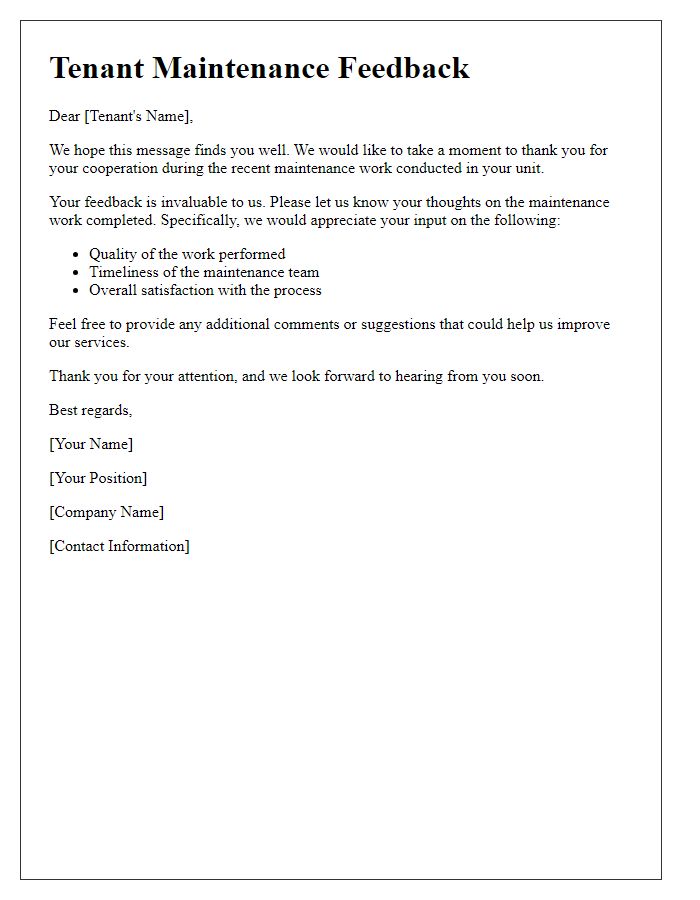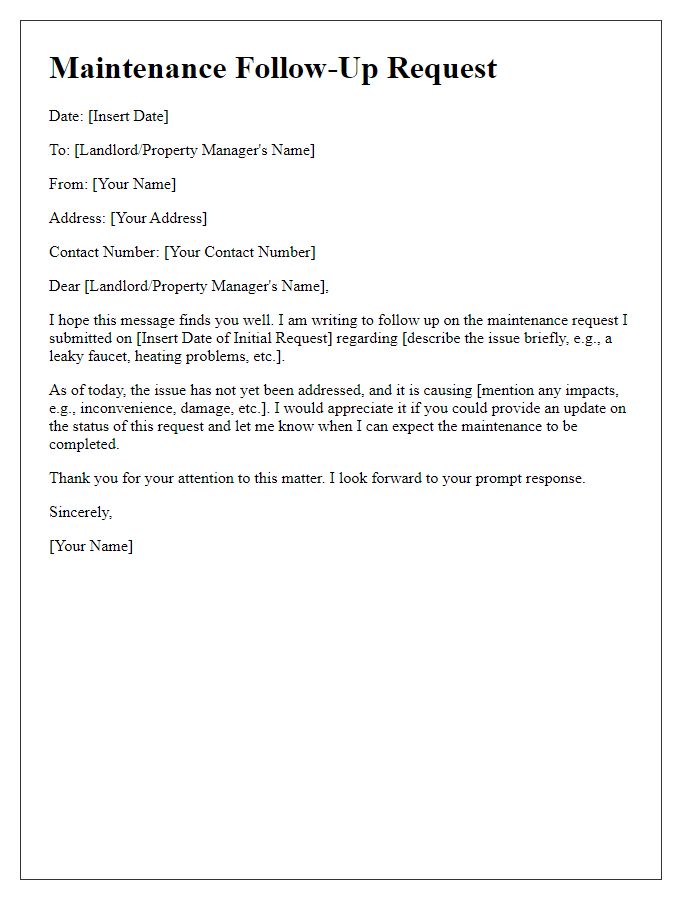Are you a tenant in need of some essential maintenance for your home? Submitting a maintenance request can feel overwhelming, but it doesn't have to be! With the right approach, you can clearly communicate your needs to your landlord or property manager and ensure that issues are addressed promptly. Dive into this article to discover an easy-to-use letter template and tips on how to craft your request effectively!

Tenant's full name and contact information
A maintenance request is essential for ensuring prompt repairs in rental properties. Tenants should include their full name, such as John Smith (for contextual detail), and accurate contact information (like a phone number and email address: 555-123-4567, johnsmith@email.com) to facilitate effective communication with property management. Details of the issue should be clearly outlined, including the specific location within the unit (for example, "kitchen sink") and a description of the problem (like "leaking water"). Providing information about previous attempts to address the issue or the duration (such as "for the past week") also helps prioritize the request, ensuring timely maintenance service within the premises.
Property address and unit number
The property address, specifically 123 Maple Street, Unit 4B, serves as the residence for tenants experiencing maintenance issues. The heating system, crucial during winter months with temperatures often dropping below freezing, has exhibited erratic performance, failing to maintain a consistent temperature of 72 degrees Fahrenheit. Additionally, water leakage from the ceiling has intensified, threatening the integrity of drywall and possibly leading to mold growth, a significant concern in environments with high humidity levels typical of late spring in this region. Prompt attention to these issues is essential for tenant safety and comfort.
Detailed description of the maintenance issue
Leaking faucets can cause significant water waste in residential units, particularly in older properties built before the 1990s. A single dripping faucet can waste up to 3,000 gallons of water annually, leading to increased utility bills for tenants. Common causes include worn-out washers or corroded valve seats, typically found in kitchen or bathroom sink fixtures. Addressing this issue promptly not only prevents water damage to cabinetry and flooring but also minimizes the risk of mold growth due to prolonged moisture exposure. For example, in a typical two-bedroom apartment, maintenance teams should prioritize setting up a service visit within three days to ensure tenant comfort and property integrity.
Urgency level and impact on living conditions
Tenant maintenance requests are crucial for ensuring comfortable living conditions within rental properties. Urgent maintenance issues, such as leaking pipes, can lead to extensive water damage, creating hazardous mold growth within 48 hours. Heating failures in winter months (below 0 degrees Celsius) can result in unsafe living environments, risking tenant health. Non-urgent concerns, while not immediately impacting daily life, can still affect overall satisfaction and property value. Regularly scheduled maintenance checks can prevent larger issues from arising, promoting tenant retention and enhancing property management reputation. Understanding and categorizing urgency levels assist in prioritizing requests effectively.
Request for a timeline and confirmation of receipt
In a tenant maintenance request, clarity and conciseness are essential. Tenants should specify the date of the request, maintenance issues, and location details. Clear description of problems, like plumbing leaks or electrical issues, ensures effective communication. Requesting a timeline for repairs enhances understanding of resolution timeframes. Confirmation of receipt ensures acknowledgment and accountability from property management. Following up within a week can reinforce the urgency of the maintenance issue, prompting action and maintaining tenant comfort. Regular communication can build a positive landlord-tenant relationship.













Comments